
Library of Congress – HABS Photo Collection. Image of Winthrop Un., Tillman Hall, including the stocks for convict laborers used to build the structure and landscape the campus.
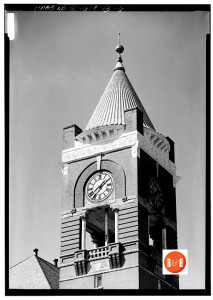
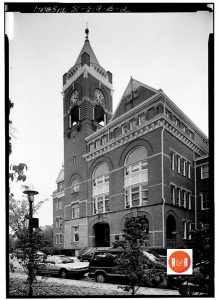 “Oakland Park was designed by Joseph Forsyth Johnson”
“Oakland Park was designed by Joseph Forsyth Johnson”
Recent research by Historic Rock Hill has uncovered an interesting connection between Rock Hill and a nationally known landscape designer of the late nineteenth century. The Oakland development, launched in 1891, represented perhaps the single greatest expansion of the city in its history. Developed by the Rock Hill Land and Town Site Company, Oakland was a “streetcar suburb,” a trend evident in many larger cities during this period. The Company was organized with a capital of $100,000 by local business leaders William Blackburn Wilson, II, R. T. Fewell, Capt. William Lyle Roddey, J. M. Cherry, and John J. Hemphill. They soon began development of the 1,300-lot development, which would transform the city.
The Herald reported on May 17, 1888 – “The Sec. of State has issued a commission to W.J. Roddey and W. Blackburn Wilson to open subscriptions for the Piedmont Belt Land and Loan Company. The capital stock will be $25,000. and the company will be authorized to buy land, sell land, and develop land and to buy and sell securities.”
When William Blackburn Wilson returned to Rock Hill, (from hiding from the Federal Authorities), one of his first acts was to organize a real-estate company which remains Rock Hill’s oldest corporations. It was called The Land and Town Site Company, and it was this company that developed Oakland and named it for the city on the West coast. This organization was formed in 1891 with the following directing its affairs: W. B. Wilson, president; R. T. Fewell, vice-president; W. L. Roddey, treasurer; J. M. Cherry, secretary; and John J. Hemphill. This company, with Mr. Wilson’s option, bought a large body of land north of the railway, some of it within the city limits and adjacent to parts that had already been built up, and parts outside the corporate limits.
A public park, with winding roads, a pavilion, and a small lake was a part of what was first spoken of as “the pleasing little village of Oakland.” Here in the park a bandstand was erected and concerts were enjoyed during the long summer evenings. The Iredell Jones Orchestra and the Cornet Band would alternate with their concerts. Later the Julian Johnson Orchestra added to the gaiety. Here, too, in the large Casino -now the caretaker’s residence on the Winthrop Campus was the scene of numerous “hops,” as they were called. Oakland Avenue was laid out one hundred feet wide” seemingly a useless waste of land in those days.” Mr. Wilson and his family moved to the old Fewell house, still standing on the corner of Sumter and College avenues, and from that vantage point he kept a close and loving eye on his project. (Information from: The City Without Cobwebs – Douglas S. Brown, 1953)
LETTER FROM BETHESDA
The following item appeared in the Yorkville Enquirer on May 6, 1891. The writer is unknown, but was evidently a regular correspondent for the paper. It appears that the writer from Guthriesville was poking some gentle fun at the progressive citizens of Rock Hill.
“It is still dry. Sunday evening the clouds gathered in the south-west and muttering thunder seemed to prognosticate rain, but the wind rose and drove the clouds away toward Rock Hill. Probably Black Wilson, or Roddey, or some of those fellows may have stopped them there, just to refresh the grass and flowers in the city park, or lay the dust on the street railway, or maybe to fill up the lake in the park to see if she will hold water. We do not know that any of them did this, as we have not heard from the Magic City since Sunday, but we are satisfied that the gentlemen mentioned, as well as a majority of Rock Hill’s citizens, have pluck and energy to accomplish almost anything they try to do. At any rate, the clouds went away from here, bearing the needed rain with them…”
Other articles in the same paper note that a spring drought was causing problems for the farmers of the county. As is the case today, farmers who depend on rain for their livelihood may resent rain falling on the city. The writer mentions William Blackburn Wilson and William Lyle Roddey. These men were among the leaders in the Rock Hill Land and Town Site Company, which was at that time developing the Oakland area. This was a large expansion of the city, equivalent to the area today roughly bounded by Charlotte Avenue, Knowledge Park, West Main Street and Cherry Road. Oakland was a “street car suburb,” following the trend of similar developments in much larger cities. It consisted of 1,300 lots for residences and Oakland Park, a beautiful landscaped park with winding drives, a gazebo, and a small lake. It was designed by Joseph Forsythe Johnson, an English landscape architect who had worked in Prospect Park in Brooklyn, New York, Piedmont Park and Inman Park in Atlanta, and Latta Park in Charlotte. We know from other news articles that Oakland Park was under construction in the spring of 1891, so the author of the “Letter from Bethesda” was well aware of the developments in the nearby city of Rock Hill. He mentions the park, with its flowers and grass, the street railway, which connected downtown with the Oakland development along Oakland Avenue, and the lake in the park. Other accounts in the Herald confirm that the lake was full when the grand opening for Oakland Park was held on July 4, 1891. In 1895, Oakland Park became the core of the new campus of Winthrop College.
The Herald reported on Sept. 10, 1890 – “The subscription books for the RH Land and Site Company are now open at First National Bank. This company promises to be of greater advantage to Rock Hill than any other organized here. It has a great number of applications already for residence lots.”
The Herald reported on Sept. 24, 1890 – “The Town and Site Company has been formally organized and directors are deciding on the width and debts of lots. They have employed Mr. McBee, a civil engineer of Greenville, S.C. to survey and lay off the new town. The directors are: W.A. Courtenay of Charleston, J. J. Hemphill of Chester, W.L. Roddey, W.B. Wilson, Jr., R.T. Fewell and J.M. Cherry.”
The Herald reported on Dec. 10, 1890 – “The Board of Trustees of Erskine College met in Rock Hill recently to examine potential sites for a campus if they decided to move the college from Due West. The sites included ten acres belonging to the RH Land and Townsite Company, ten acres belonging to A.E. Hutchison in the Northwestern section of Rock Hill and ten acres belonging to Capt. Iredell Jones to the rear of the residence of Col. C. J. Pride.” (The college board determined to keep the college in Due West, S.C.)
On Jan. 14, 1891 the Yorkville Enquirer reported – “The RH Land and Townsite Co., has purchased the S.M. Mills from Mr. W.J. Rawlinson.”
The Yorkville Enquirer reported on March 25, 1891 – “Lumber for building the electric railway bridge across the CC and A Railroad has been received and work will commence at once.”
The Yorkville Enquirer reported on April 15, 1891 – “The Rock Hill Town and Site Company is busy grading streets and laying off building lots. Carpenters are now at work on the bridge for the electric bridge railway across the CC&A Railroad.” On April 22 – “The iron and cars for the street railway are expected daily. The bridge across the CC&A railway is nearly completed.”
The Yorkville Enquirer reported on Aug. 12, 1891 – “A party of young people took the street cars out to Oakland Park a few days ago and had a grand picnic.”
The Enquirer reported on Aug. 26, 1891 – “The casino in Oakland was the scene of delight on Thursday evening. The music was furnished by one of Charlotte’s string bands and the Rock Hill Cornet Band. The street cars ran until a late hour to accommodate the crowds.”
The Yorkville Enquirer of Oct. 4, 1893 stated, “the foundation of the Industrial School is to be laid about the middle of the month. It is reported that the Honorable J.L. M. Cherry, Chairman of the Board of the Peabody Fund will be present.”
On Feb. 1, 1896 there was an ad for the RH Land and Townsite Company – “Will sell you a lot beautifully located in the most elevated part of the city of Rock Hill lying near the Winthrop Normal and Industrial School.”
The Herald reported on May 27, 1896 – “A soiree will be held at the Oakland Park Pavilion for the dance classes of Mr. McClenllan and Ms. Hucks.”
The Herald reported on June 10, 1896 – “Mr. John C. White, who has been connected with the Oakland Company of manager of the farm and streetcar line, has resigned. He will be replaced by Mr. R. S. McConnell.”
The Herald on Nov. 10, 1900 stated, “The citizens along Oakland Ave., are their own expense, improving the pavements with ciners and sand from Major London’s corner to the home of Mr. Gelzer.”
The Record reported on Oct. 16, 1911 – “Mayor J.T. Roddey, say the new concrete bridge proposed for Oakland Ave., has been approved by the regional office of the Southern Railroad and the proposal will now go to the national office.”
WINTHROP COLLEGE – At the heart of the development were Oakland Avenue, connecting the area with downtown Rock Hill via a street car line, and Oakland Park, a 30-acre public space. Oakland Park was located where the Winthrop University main campus is today. Many street car suburbs across the nation featured beautiful public parks as an enhancement to the sale of lots.
Oakland Park was designed by Joseph Forsyth Johnson, a nationally known landscape designer. The development of planned urban parks in the United States was pioneered by Frederick Law Olmsted several decades earlier with New York’s Central Park. Olmsted and his family members continued their practice for many years, working in cities around the nation. The development of parks in the South was delayed by the destruction of the Civil War and the ensuing period of upheaval and poverty. By the 1880s, major southern cities began to grow rapidly, and the development of streetcar suburbs in southern cities led to creation of major parks. Joseph Forsyth Johnson was one of the men who helped to design these parks.
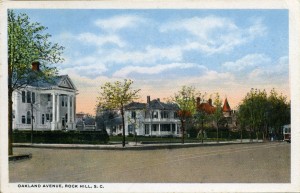
Extremely fine homes were constructed along Oakland Ave., leading between Rock Hill and Winthrop College.
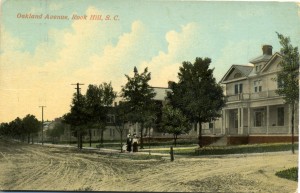
Johnson (1840-1906) was born in England. His family background included men who were well-known botanists. His maternal grandfather, John Forsyth, was a London florist. John’s father was William Forsyth (1737-1804), a Scot who was born in Aberdeen and became gardener at Syon Park in West London, then superintendent of the Chelsea Physic Garden in 1771. In 1784, he was appointed superintendent of gardens at St. James and Kensington Palaces. Forsyth was one of the founders of the Royal Horticultural Society in 1804, shortly before his death. Most American yards have a forsythia bush, or yellow bell, which blooms in the early spring. This genus was named for William Forsyth.
Joseph Forsyth Johnson followed in his great-grandfather’s tradition. As a young man, he designed grounds for estates in England, Ireland, and Russia. By 1869, he had become curator of the Royal Botanic Gardens in Belfast, Ireland. He also opened a gardening shop on Bond Street in London. In 1885, Johnson came to the United States and was employed by Prospect Park in
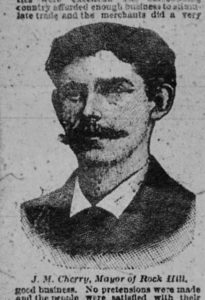
Etching of Mr. J.M. Cherry, one of Rock Hill’s leading businessmen, printed in the Charleston News and Courier – 1890.
Brooklyn, New York. Two years later, he came to the South, where he worked on parks in several streetcar suburbs. In Atlanta, he worked with developer Joel Hurt on designs for Inman Park and Piedmont Park. In 1891, he was in Charlotte, where he designed the new Latta Park.
It was during this period that Johnson worked on Oakland Park. There is no evidence that he designed the layout of the entire Oakland development, but we do know that in the spring of 1891, he was working on Oakland Park. The Herald had a large advertisement for Oakland beginning in the late spring stating that “Oakland Park is being laid out by one of the most imminent Landscape Engineers in America.” On Wednesday, May 27, The Herald ran an item in the local news section which read, “Prof. Jos. Forsyth Johnson, landscape designer and garden architect, of London, ex-curator of the royal botanic garden, Belfast, and late horticultural director of Alexander Palace, London, came to Rock Hill last Monday and is now engaged in laying off the park and beautifying the gardens in Oakland belonging to the Rock Hill Land and Town Site Co. Professor Johnson is distinguished in his line.” By June 10, there was an update on the work on Oakland Park. “Matters have begun to assume a very pleasing appearance at Oakland Park. The labyrinth of drives has been laid out and graded and are now being leveled, three thousand feet of iron piping for the fountains and water system of the park have been laid, workmen are now engaged in giving shape to the lake, which will cover about an acre, with a fountain playing at its head, and the amusement pavilion now being erected for the company by the Rock Hill Land and Town Site Co. is nearing completion.” The Herald reported on June 24, “The casino, or amusement hall, in Oakland Park is nearing completion. It will be a very attractive building when finished. The lake is beginning to fill; the water was turned on last week.” The pavilion was often described as a casino locally, but it was not a gambling hall. It was used for band concerts, parties, dances, and receptions and could accommodate at least 300 people.
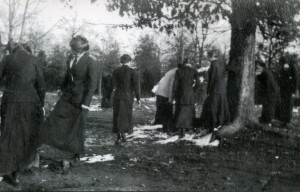
Students at Cherry Park, on Oakland Ave., in ca. 1912. Courtesy of the Pettus Archives at Winthrop University
Oakland held a grand opening on July 3 and July 4, 1891, with an auction of lots, an open house, band concerts at the pavilion, and a fireworks display. It is not clear how long Johnson was in Rock Hill, but he probably was working on the park during most of the construction period. The 30-acre Oakland Park was open to all residents of Rock Hill, and “going out to Oakland” became a popular entertainment. Grand homes were built along Oakland Avenue, and lot sales continued for years. Oakland Park seemed to be comparable to many of the parks in streetcar suburbs in much larger cities. Unfortunately, it was not to last long. In 1895, the site of Oakland Park was sold to the state for $5 to accommodate the location of Winthrop Normal and Industrial School in Rock Hill. The main campus of Winthrop University now occupies the site of Oakland Park. From other sources, we know that when Governor Ben Tillman came to Rock Hill to decide on a location for Winthrop, the thing that impressed him the most was the beauty of the site and of the landscape in Oakland Park.
Joseph Forsyth Johnson continued to work on landscape design after his work in Rock Hill, but his career did not end well. When he came to America in 1885, he abandoned his wife and six children in England, and traveled with Frances Clarke, who was pregnant at the time and was listed on passenger lists as his wife. They had three children in America. Johnson eventually abandoned his American family and returned to England several times. He died in Brooklyn, New York in 1906 with so few assets that he was buried in an unmarked grave in Evergreen Cemetery. In recent years, his American and English families have discovered their common heritage. One of Johnson’s descendants in England is Sir Bruce Joseph Forsyth-Johnson, a noted British television personality born in 1928. Sir Bruce has been featured in game shows, interview shows, and reality shows since 1957, and is one of the best-known British entertainment personalities. A few years ago, he appeared on a show titled “Do You Know Who You Are?” where he learned of the dual families of his ancestor in front of a television audience. Sir Bruce has had a large monument placed at the grave of Joseph Forsyth Johnson.
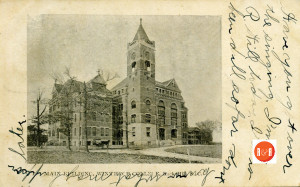
An early view of Winthrop College’s Tillman Hall.
[Contributed and written for R&R by Paul M. Gettys – 2014]
The Rock Hill Record reported on May 7, 1908 – “The City has had for some time a force of men grading Oakland Ave., to get the roadway level. The street will soon be paved.”
The Herald reported on Oct. 16, 1897 – Grading on Oakland Avenue is being done to provide a gentle incline from the bridge over the railroad to the college. Stewart Brothers of Rock Hill has the contract. They will grade about four feet in front of the W.J. Roddey home. Oakland promises to be the prettiest highway in Rock Hill. Five years ago, it was a new street and now there are eleven home, Winthrop College, and the high school.
The Herald contained an add on July 8, 1925 for an auction of lots in the Oakland Development, including a map. The map shows lots on Park Ave., College Ave., Ebenezer Ave., Ext., Camden Avenue and Ebenezer Road. The auction is to take place on July 16, and a free Ford automobile is to be given away. The owner is the Rock Hill Town and Site Company and the sale agent is the People’s Trust Company. The add stated, “that the paving of Oakland Ave., to the City limits is being completed and a hard surface highway to York will soon be completed.”
See an enlarged map of the Oakland Area under More Information
Stay Connected
Explore history, houses, and stories across S.C. Your membership provides you with updates on regional topics, information on historic research, preservation, and monthly feature articles. But remember R&R wants to hear from you and assist in preserving your own family genealogy and memorabilia.
Visit the Southern Queries – Forum to receive assistance in answering questions, discuss genealogy, and enjoy exploring preservation topics with other members. Also listed are several history and genealogical researchers for hire.
User comments welcome — post at the bottom of this page.
Please enjoy this structure and all those listed in Roots and Recall. But remember each is private property. So view them from a distance or from a public area such as the sidewalk or public road.
Do you have information to share and preserve? Family, school, church, or other older photos and stories are welcome. Send them digitally through the “Share Your Story” link, so they too might be posted on Roots and Recall.
Thanks!
User comments always welcome - please post at the bottom of this page.
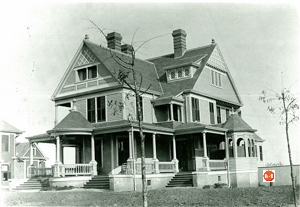
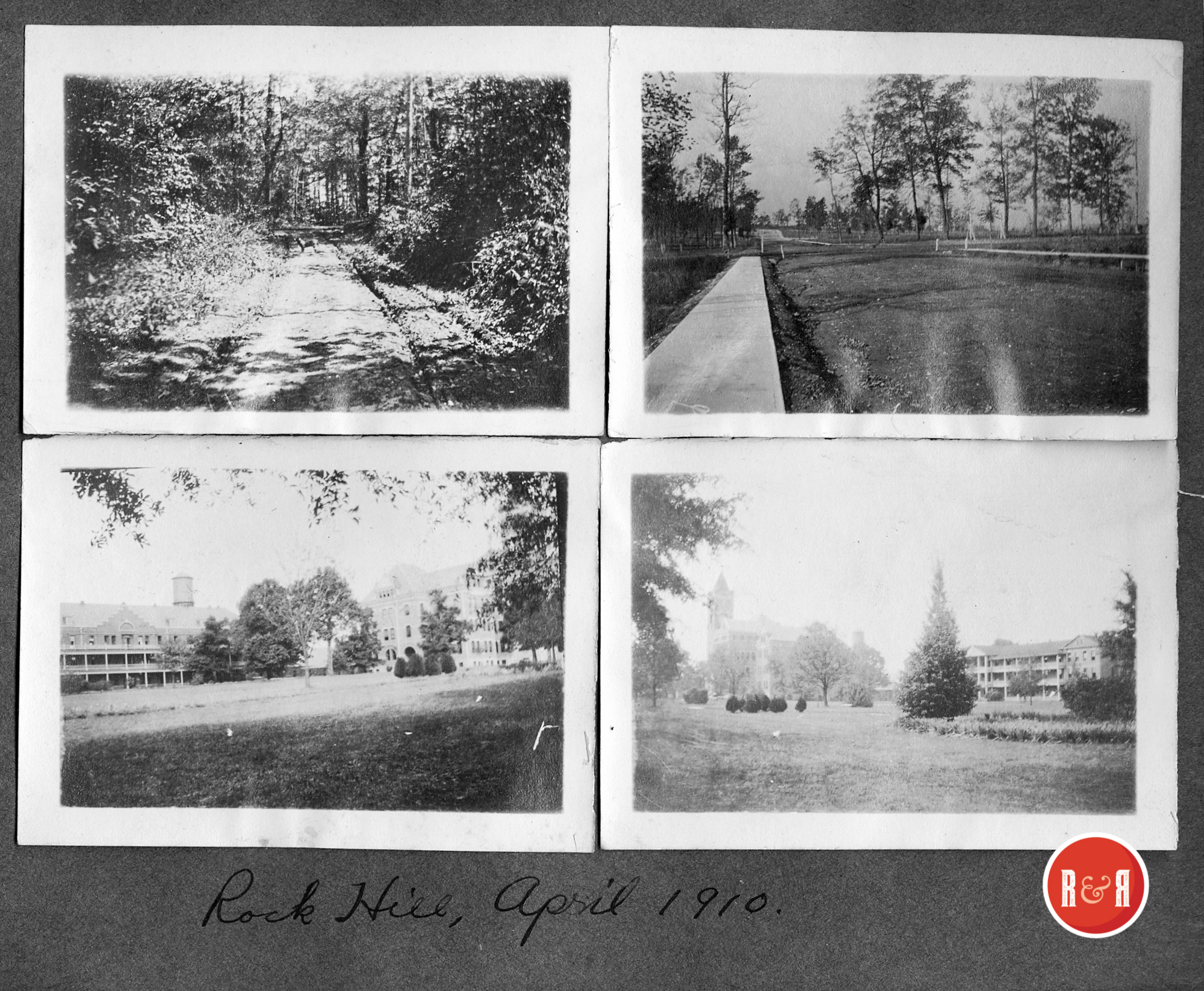
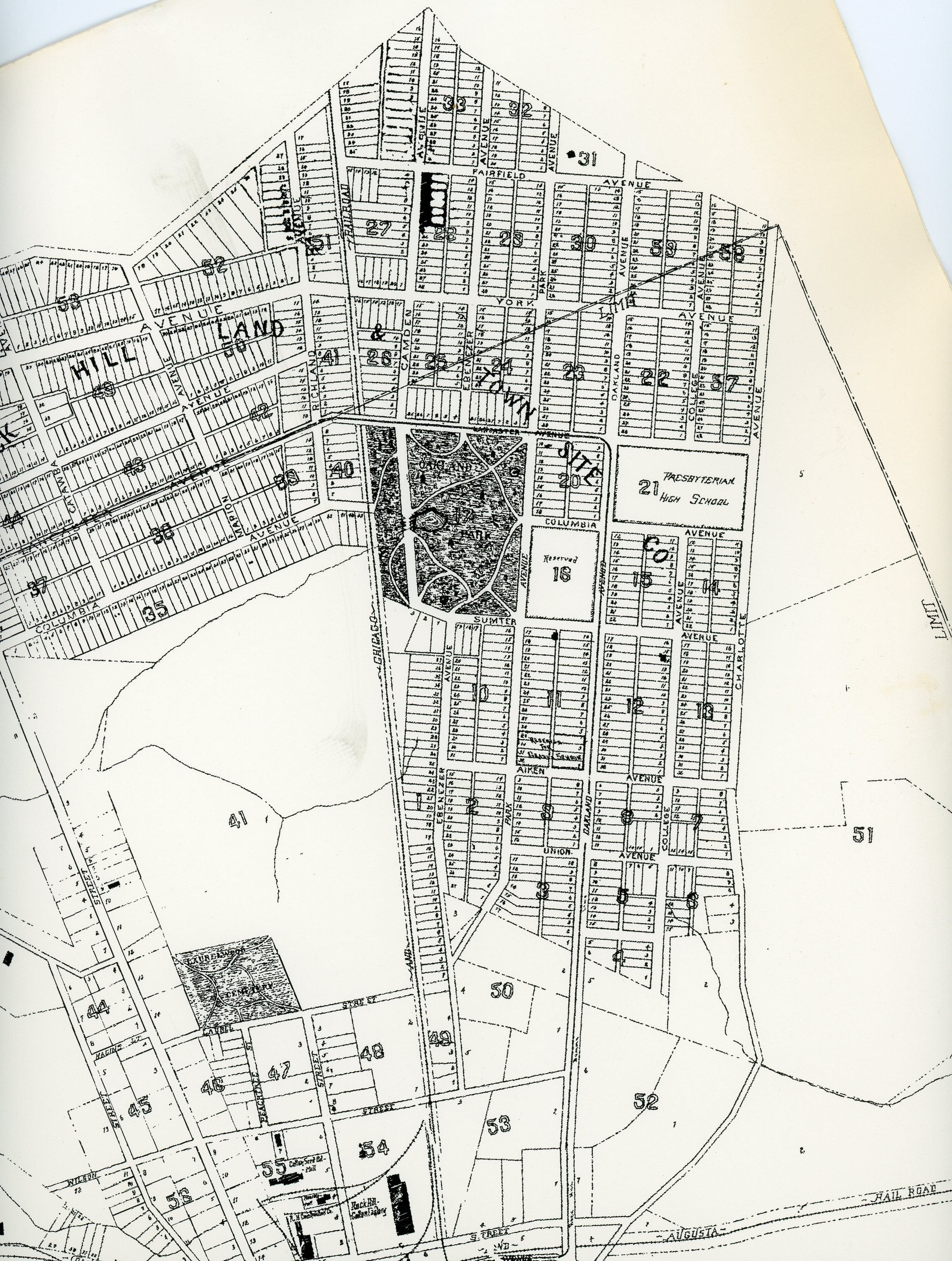
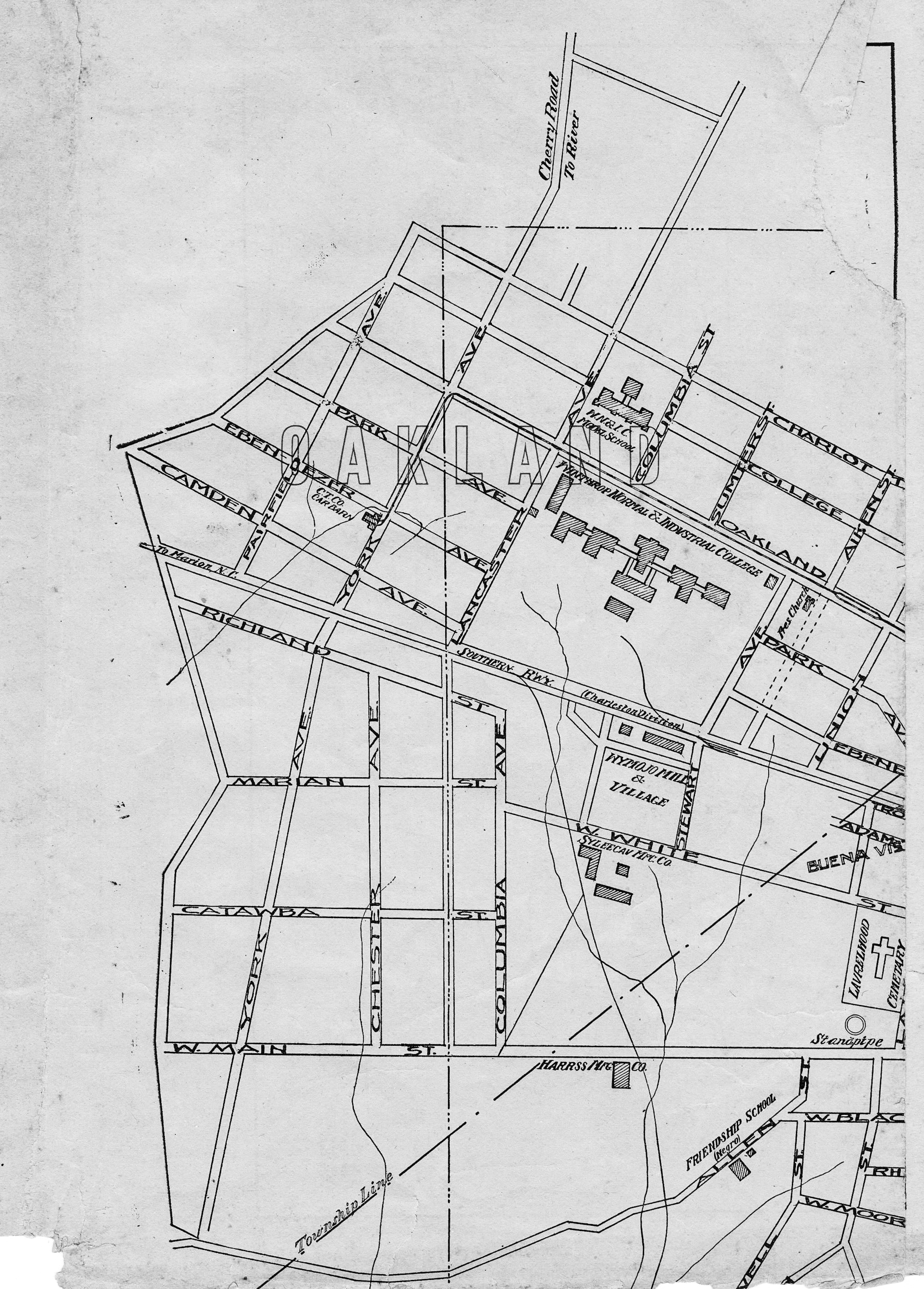
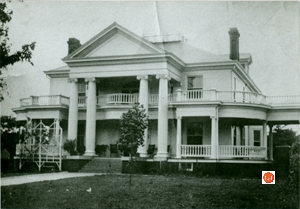
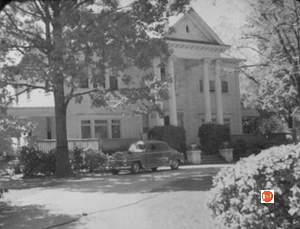
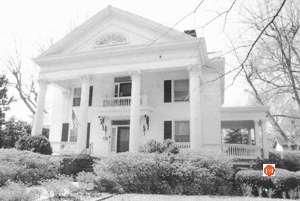
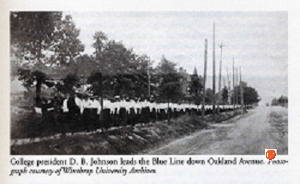
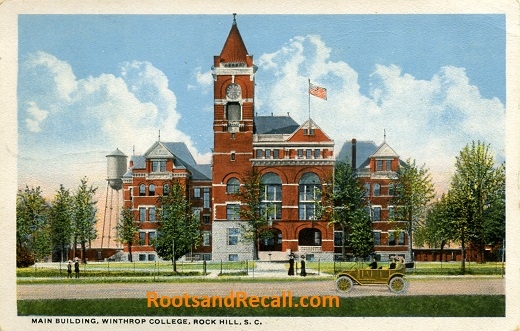
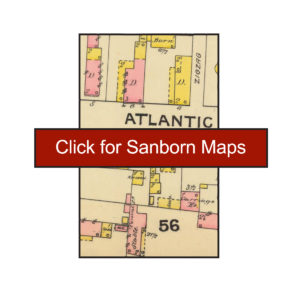




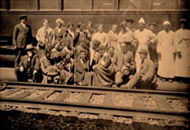
Share Your Comments & Feedback: